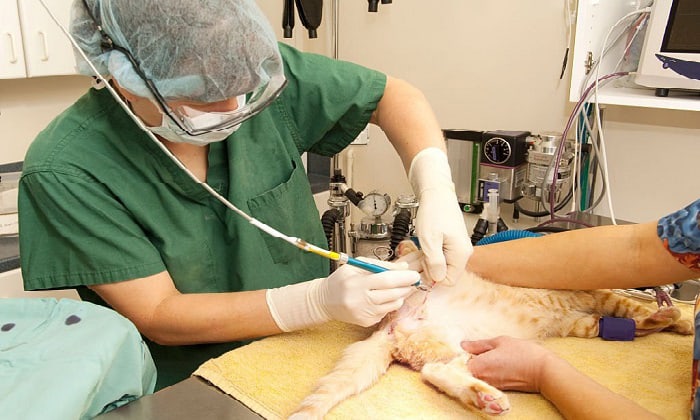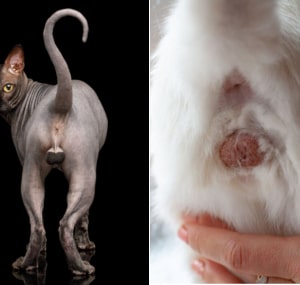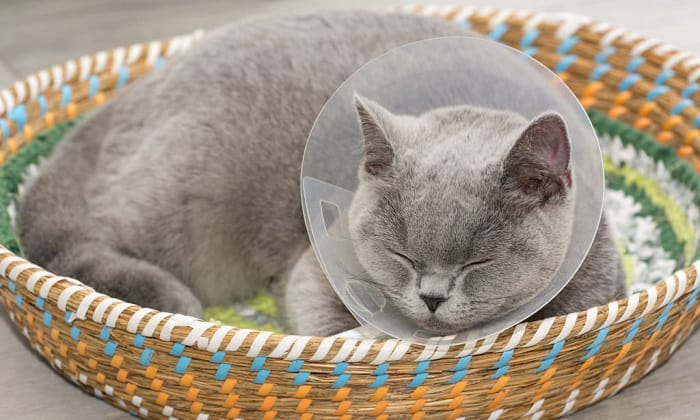Cats make awesome pets. They require low maintenance, are quiet, and can be very independent.
Cats reach sexual maturity around 4 months, and most experts suggest neutering them around that time or even before. Neutering your pets can provide them with a lot of benefits to their health and behavior and can help control the cat population.
Male cats, or tomcats, in particular, can benefit from being neutered by removing the risk of testicular cancer. Neutering can also alter the behaviors of different tomcat breeds.
Check out the table below to see the differences between a tomcat vs neutered cat.
|
Tomcat |
Neutered Cat |
|
Physical Differences |
|
| Thicker heads | Smaller heads |
| Muscular | Slimmer frame |
| Testicles are present | Lack of testicles |
| Developed Jowls | Lack of Jowls |
|
Behavioral Differences |
|
| Likes to wander a lot | Stays close to home |
| Aggressive towards other males | Not aggressive towards other males |
| Has a strong odor and no hygiene | Clean |
| Sprays urine to mark territory | Does not mark territory |
Table of Contents
What is a Tomcat?
The term “tomcat” comes from the 1760s book by Willoughby Mynors titled “The Life and Adventures of a Cat.” The book’s main character is a wild male cat called “Tom the Cat” with many female lovers.
Over time “Tom the Cat” was shortened to tomcat, meaning a sexually mature male cat of any breed. Tomcats, or unfixed male cats are known to be aggressive and territorial.
Tomcats love to roam around and look for females to breed. They tend to get into fights with other tomcats over their territory or partners. A tomcat looks much larger than any other cat breed and has a stronger smell than its neutered counterparts.
What is a Neutered Cat?
A neutered cat is a cat that has had its reproductive organs surgically removed. Male cats are neutered or “fixed” by having their testicles removed. The process is relatively painless, and the wound caused by the incision will heal easily.
The primary purpose of neutering cats is to stop them from breeding. Cats tend to make a lot of kittens and can cause overpopulation in the area. This overpopulation can cause several things, such as:
- Overcrowded pet shelters
- Death of other wildlife, such as birds
- Reduced biodiversity
- Dangerous diseases such as rabies
- Dangerous parasites relevant to Alzheimer
Neutering male cats can also reduce several behavioral patterns in tomcats. Neutered cats are much less aggressive and stop them from urine marking or “spraying,” which is typical tomcat behavior.
Differences
Because neutered cats do not undergo complete sexual maturity, they have many differences to male tomcats. In this section, we will break down in detail the differences between neutered vs unneutered male cat.
1. Testicles
The most obvious difference between the tomcat and the neutered cat is the presence of their testicles found underneath their tails. Neutered cats have theirs surgically removed at a young age.
The testicles produce most testosterone found in male cats. Testosterone is a sexual hormone that controls the sexual behavior found in male felines. The amount of testosterone in their bodies is the primary reason for the behavioral and physical differences between a tomcat and a neutered cat.
2. Physical attributes
Neutered cats are generally smaller compared to tomcat size. Tomcats are much more bulky and muscular. Another important distinction is the tomcat vs neutered cat face.
When a male cat is not neutered, they develop what is known as tomcat jowls or tomcat cheeks. These chubby cheeks, which are perfect for pictures, are caused by testosterone and can be used as a signal to other cats that they are fertile.
The jowl also covers parts of their neck, making them less vulnerable when fighting.
3. Smell and urine
Tomcats are much smellier compared to neutered cats. This is caused by larger scent glands found in their tails which can also make their urines smell much more unpleasant.
4. Behavior
Due to the presence of testosterone, Tomcats are likely to look for female cats so that they can breed. This causes tomcats to be territorial, aggressive, and love to roam around.
- Tomcats like to mark their territory by spraying or urine marking. This can be bad if they are kept as pets since it would stink up the place.
- Tomcats are also competitive and aggressive. They will fight other cats for a mate, and they usually end up with wounds and scars.
- Roaming to look for mates is also common for tomcats. However, this can be dangerous as they are much more likely to get into accidents or be exposed to diseases.
On the other hand:
- Neutered catsrarely, if ever, exhibit these behaviors. Since they have less testosterone, unneutered male cat behavior means they are less likely to look for a mate and be aggressive.
- Neutered cats also spend more time grooming themselves, which makes them cleaner and less likely to be sick.
Pros and Cons of Neutered Cat
If you are thinking about getting a cat, here are some pros and cons you should consider before neutering them.
- Removes the Risk of Breeding
- Cleaner and Less Aggressive Pets
- Healthier Pets
- Can no longer breed
- Changes Appearance
- May gain weight
Neutered cats are by definition sterilized cats. Neutering your pet eliminates the risk of breeding and can help with the problem of cat overpopulation. However, neutering is not an option if you plan to breed your cat.
Neutered cats make good pets because they are more well-behaved. They are clean and not prone to fights with other cats. A neutered cat also has smaller frames which aren’t great if you are planning on having a muscular cat with tomcat jowls.
The biggest pro of neutered cats is that they are much healthier across the board compared to unneutered ones. Removing their testicles means there is no risk of testicular cancer and reduced chances of prostate cancer.
Neutering, in some cases, causes weight gain in cats. Since they are less likely to spend their time looking for a mate, they do not spend a lot of energy, which can lead to unhealthy weight gain.
Frequently Asked Questions
Do tom cats fight with neutered cats?
Tom cats are territorial and will engage in fighting with other cats if they perceive them as having entered their area. Neutered cats are less likely to fight with other cats.
How do you tell if your cat is a Tomcat?
A simple visual check can help you determine if your male cat is a tomcat. Simply check the lower abdominal area to see if they have testicles.
What is a neutered male cat called?
A neutered male cat is often called “Gib” from the name “Gilbert”. “Tibs” for “Tybalt” is another term used in the French language.
How big do tomcats get?
The size and weight of a cat are dependent on its cat breed. The average tomcat can reach about 7 lbs. Neutered male cats might be a bit smaller than tomcats, but that can still depend upon other factors such as diet and nutrition.
What kind of cat is a tom?
Tom or tomcats are male cats that have reached sexual maturity and can come from any breed. Toms are much more aggressive and territorial than neutered male cats.
Conclusion
The differences between a tomcat vs neutered cat is quite significant. Behaviorally, tomcats are more aggressive and territorial, while neutered cats are much calmer and cleaner. Neutered cats are also much slimmer than muscular tomcats.
Additionally, neutered cats tend to be healthier as they like to groom themselves and have less risk of certain cancers. However,
If you decide whether you want a tomcat or a gib, then you should think carefully since neutering your cat is irreversible. It is best you consult a veterinarian so that you can be informed of the best option for the wellbeing of your cat.

I am Amy Sawy, a Doctor of Veterinary Medicine (DVM) graduate from the University of Kansas. y husband, Dr. Plummer, and I own a veterinary clinic in Phillipsburg, Kansas. In addition to my professional background, I am a devoted pet owner myself, with a household that includes dogs, rodents, and most notably, cats – a total of five felines in my home.
In 2020, I joined an organization as a professional writer, leveraging my experience and collaborating with my team to deliver the most valuable information for your cat’s care.


















